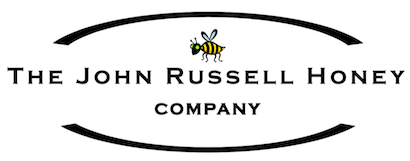Buckwhat?
When it comes to the many types of honey produced in Manitoba, our buckwheat honey is a "superfood" that is considered by many to be even more useful than manuka honey (produced mainly in Australia and New Zealand). Both buckwheat honey and manuka honey have been researched extensivly because of their health benefits, yet buckwheat honey is one superfood that has garnered little attention in many parts of the world. We would love to change this as we believe that Manitoba buckwheat honey deserves better. Of particular interest to honey lovers, since our honey is sourced locally, it can be much more affordable here in Canada and nearby than manuka honey!
Low Down
Buckwheat is a high protein pseudocereal, meaning that it is grain-like rather than a member of the grass family (although not considered a true cereal crop). It also contains an important amino acid called lysine which is rare in cereal grains. Buckwheat has tiny white flowers, so bees that make buckwheat fields must work extra hard to collect the nectar! Farmers carefully situate their hives in the middle of the field because bees will only travel around two kilometers away from their hives. The colour of the resulting honey can range from medium brown, sometimes with a reddish tinge and can be almost black.
Benefits
Both science journals and health blogs focus on four significant qualities of buckwheat honey: antioxidant properties, skin care properties, antibacterial and immune boosting properties and health care properties.
Buckwheat honey is rich in antioxidants that help defend cells from the damage caused by free radicals, free radical damage contributes to many chronic health problems like cardiovascular and inflammatory disease, cataracts and cancer. Some studies have shown that the antioxidant activity of buckwheat honey exceeds all of the other honey types in the world (including manuka honey!) Drinking a mixture of buckwheat honey and black tea boosts the level of antioxidants in the body resulting in better gut health and enhanced food digestion. It has been found to reduce cholesterol levels, lower blood pressure and contribute to a healthy heart.
Countless skin care products on the market are infused with honey for visibly better skin. When combined with cosmetic formulations, honey promotes smoothing and conditioning effects, keeps skin looking healthy, reduces wrinkles and regulates pH balance: buckwheat honey, considered by some to be the best honey in the world, is also the best ingredient of all. If you enjoy making your own self-care products, whip up a coconut oil and honey mask, a honey sugar scrub or lavender honey face wash and experience the difference for yourself!
Buckwheat honey has traditional tried and tested antibacterial and immune boosting properties. It is a great solution for cuts and burns, skin irritations and sore throats. Honey has been used to heal wounds for thousands of years as it assists the healing process, helps to prevent infection and reduces scarring. It may surprise many that before the discovery of penicillin, honey was used in hospitals and infirmaries as recently as World War II! Buckwheat honey can be used in wound care for drawing out moisture and eliminating bacteria, and it can also help prevent bacteria and other microbes from growing in the wound. Today, many hospitals still use modernized bandages treated with honey to assist in the healing process.
Buckwheat honey is a safe and effective cough syrup. Research has shown that a single dose of buckwheat honey before bedtime helps to reduce and alleviate coughing and promotes better sleep. It is also (in our opinion!) better tasting than over the counter cough medication without the addition of artificial sweeteners or sugar. If you are one of those people that finds traditional honey too sweet, you will be pleasantly surprised by buckwheat honey which is often less sweet than traditional honey. Of course, as with all honeys, care must be exercised when provided to the very young and is not recommended for use with those under 12 months of age.
What About The Taste?
Buckwheat honey has been called the Guinness of honeys due to its colour; it is less sweet than wildflower honey, has an earthy, malty aroma and a flavour sometimes compared to molasses or toasted toffee. Bon Appetit magazine writer Alex Beggs describes buckwheat honey as intense, telling readers that they are going to love it because it's "damn good" and "funky" when paired with Stilton or goat cheese. It is delicious in your favourite biscuit or scones recipe and when poured over pancakes, waffles or ice cream and it’s outstanding when added to yogurt or whiskey cocktails.
Traditionally highly prized in Slavic, other eastern European and also Jewish communities, this is a whole different honey experience than most are used to, and we want the entire world to have an opportunity to enjoy what our premium Manitoba buckwheat honey has to offer. So, what are you waiting for?
References
Arnason, R. (2018). "Manitoba buckwheat acres move to central Canada." The Western Producer. Retrieved from https://www.producer.com/news/manitoba-buckwheat-acres-move-to-central-canada/
Beggs, A. (2017). "This honey is intense and you’re going to love it." Bon Appetit. Retrieved from https://www.bonappetit.com/story/buckwheat-honey-is-amazing
Burlando, B., Cornara, L. (2013). "Honey in dermatology and skin care: a review." National Library of Medicine. Retrieved from https://pubmed.ncbi.nlm.nih.gov/24305429/
Wilson, D. (2019). "Everything you need to know about buckwheat honey". Healthline. Retrieved from https://www.healthline.com/health/buckwheat-honey

